The Animals
Black and White Ruffed Lemur
General Info
Common Name: Black and White Ruffed Lemur
Scientific Name: Varecia variegata
Physical Appearance: Black and white ruffed lemurs are among the largest lemurs. They have a long bushy tail, a neck ruff, a foxlike muzzle, and thick fur. The fur is black on the abdomen, tail, extremities, inner aspects of the limbs, forehead, circum-orbital area, and top of the head. In contrast, the back, flanks, rump, and most of the hind limbs are white. Males and females identical in appearance.
Length/Weight: Both sexes range between 3-4 feet head to tail. They weigh between 7-12 lbs.
Lifespan: Up to 20 years in the wild, and as old as 36 years in captivity.
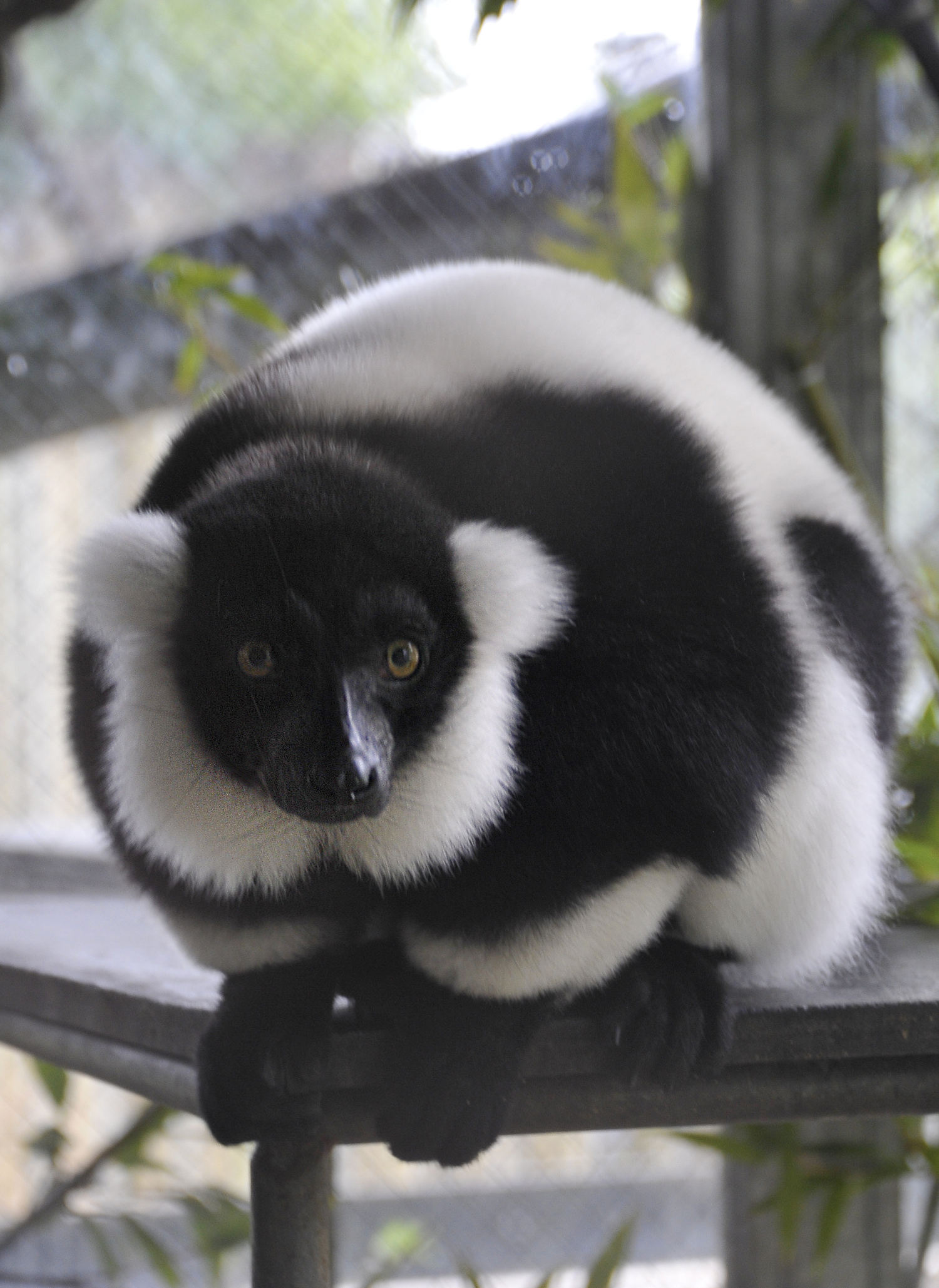
Environment
Range: They dwell mainly in lowland to mid-altitude rain forests. Ruffed lemurs are arboreal with the greatest amount of their day spent in the canopies.
Habitat: Found in the eastern forests of Madagascar, from the Antainambalana River southward to the Mananara River. A population of black and white ruffed lemurs was introduced and continues to reside on the small island of Nosy Mangebe in the Bay of Antongil.
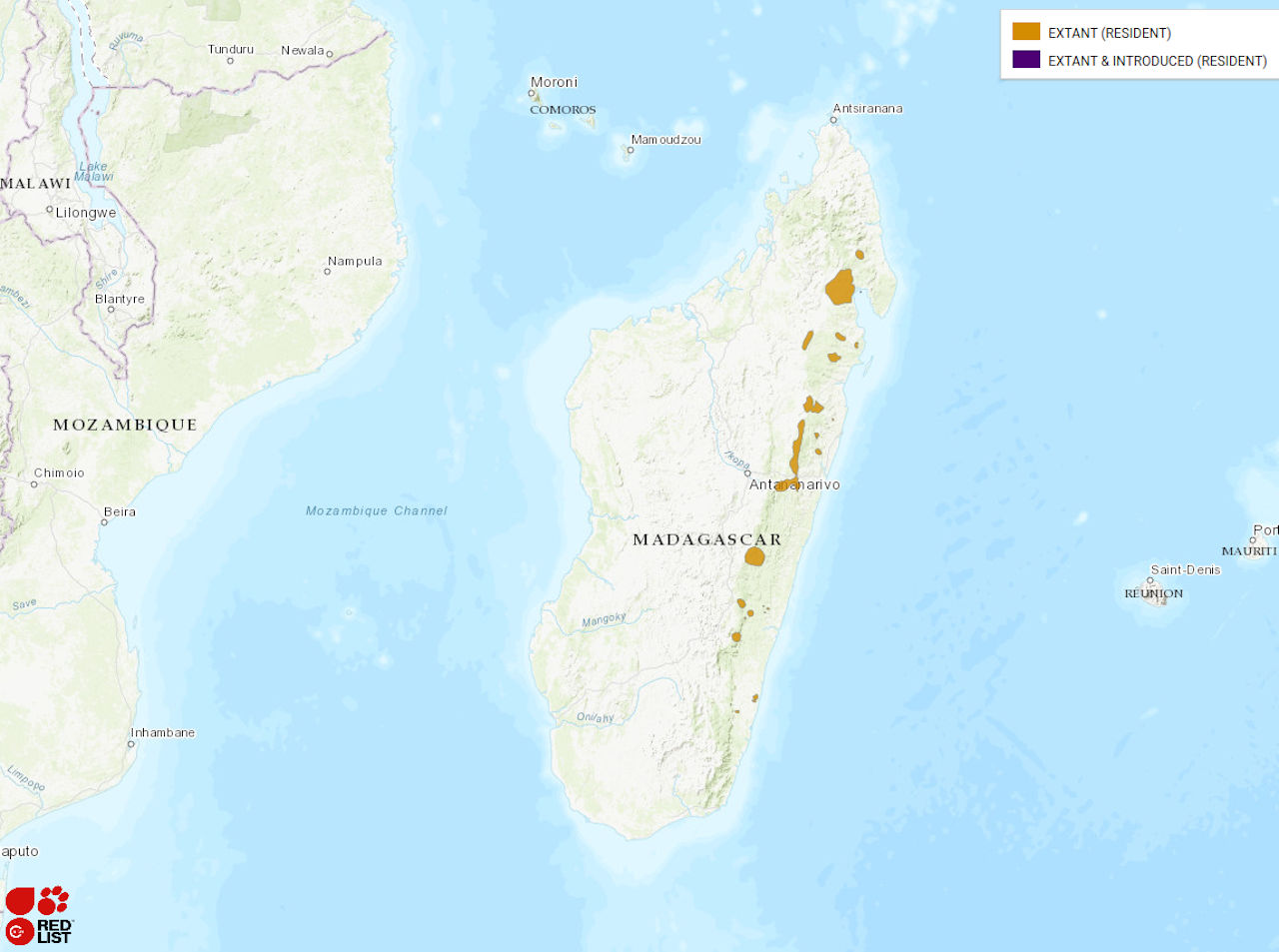
Diet
Black and White Ruffed Lemurs are primarily frugivorous (fruit-eaters) but have also been observed feeding on leaves, nectar, and pollen. They play an important role in the ecosystem as seed dispersers, as well as pollinators.
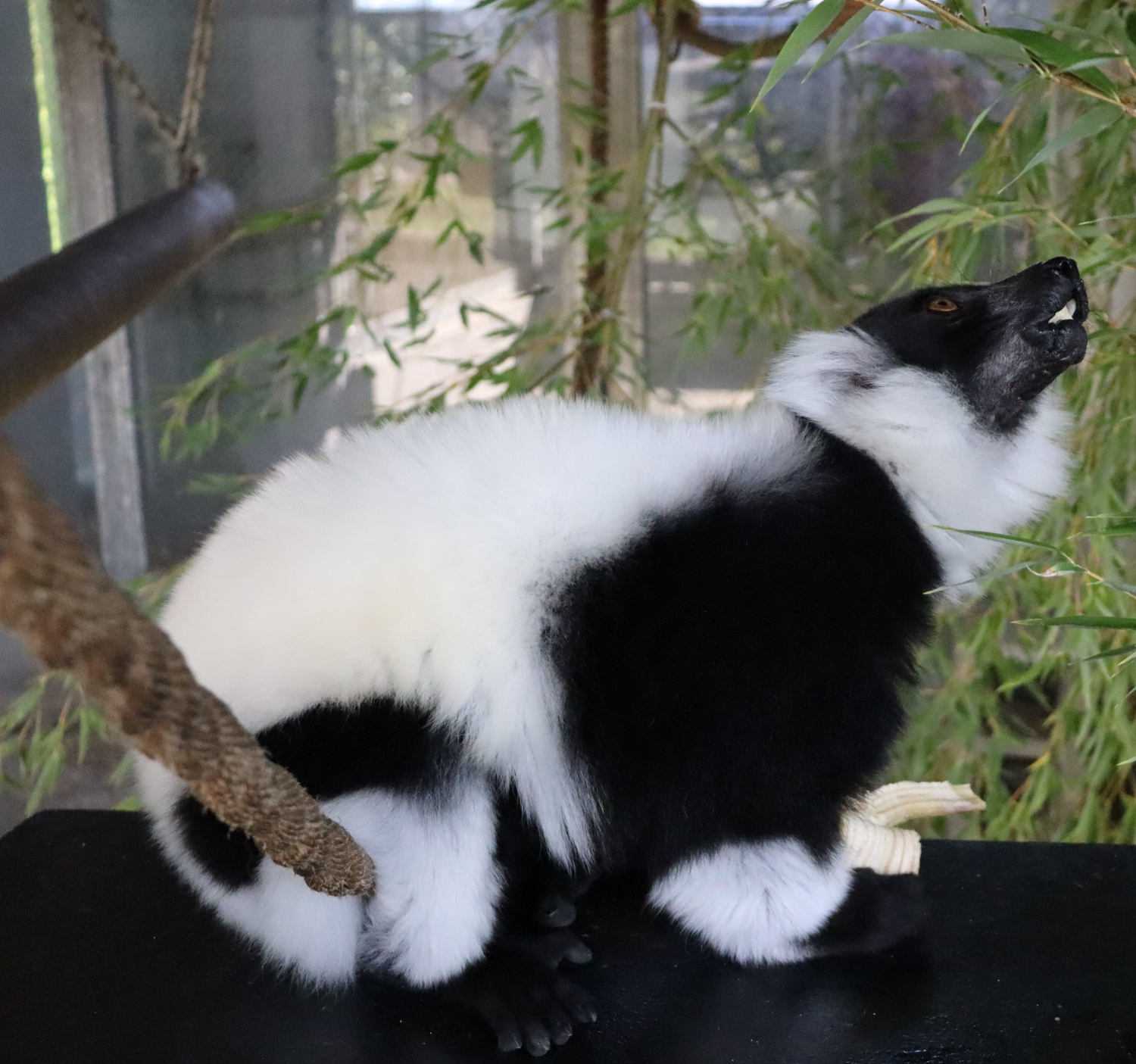
Reproduction
Females reach maturity in less than two years, males between three to four years. Black and white ruffed lemurs can give birth up to 6 young. They breed seasonally, and gestation is around 102 days. The female does not carry her infants, but rather builds a nest 30-65 feet off the ground where she stays with them for almost two weeks. If the female needs to move the infants, she does so by carrying them in her mouth by the back of their neck. In Madagascar, infant mortality appears to be extremely high for this species. 65% of infants do not make it to three months of age due to accidental falls and related injuries.
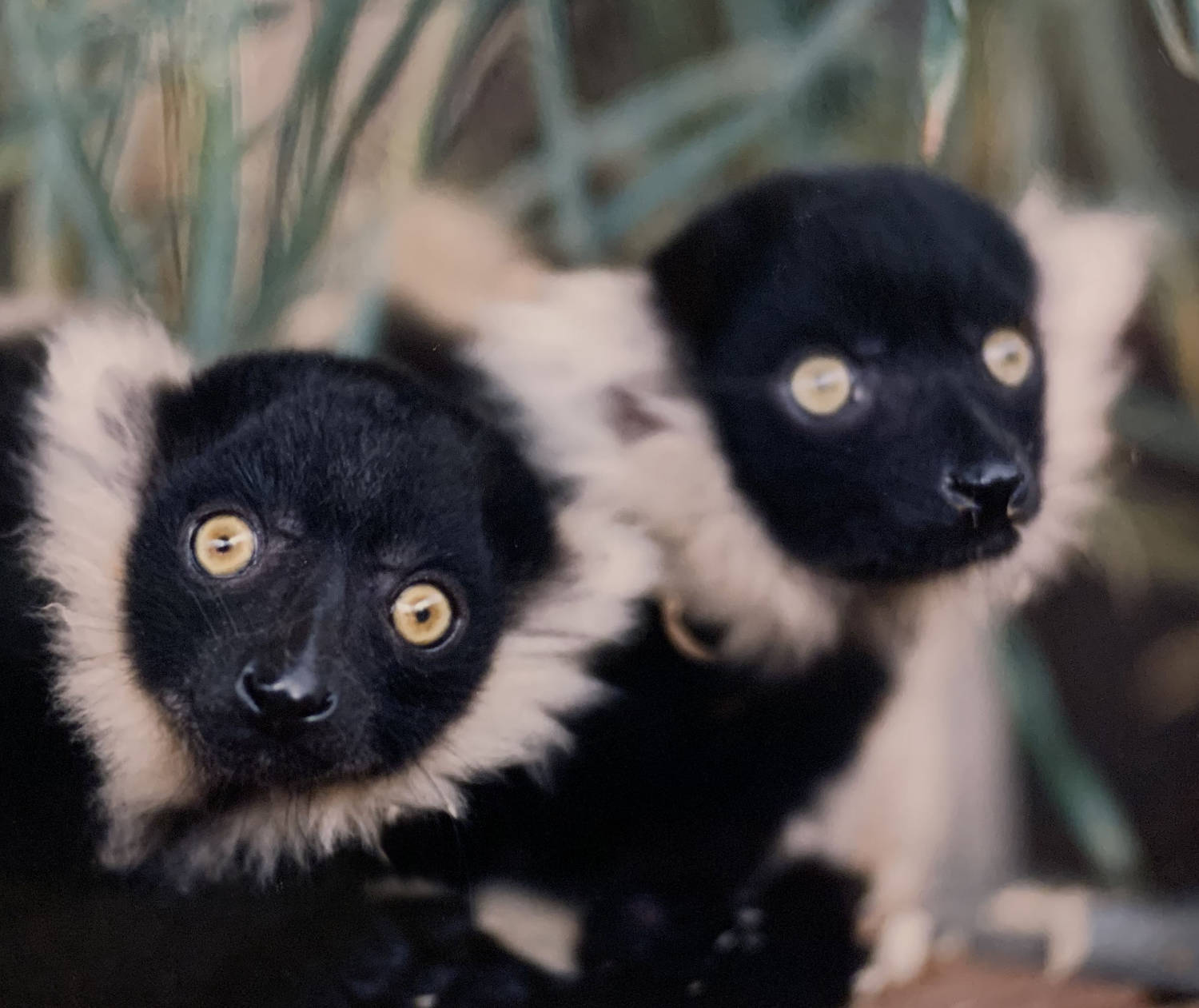
Conservation
Status:
Listed on IUCN: CRITICALLY ENDANGERED
Population Trend: DECREASING
Efforts: Threatened due to habitat loss from slash-and-burn agriculture, logging, and mining; and bushmeat hunting. Black and white ruffs are listed on Appendix I of CITES. Currently found in protected reserves in Madagascar. In 1998 and 2001, a collection of black and white ruffs raised in captivity were introduced to Madagascar in the Betamopona Reserve. The study of this reintroduction effort is ongoing.
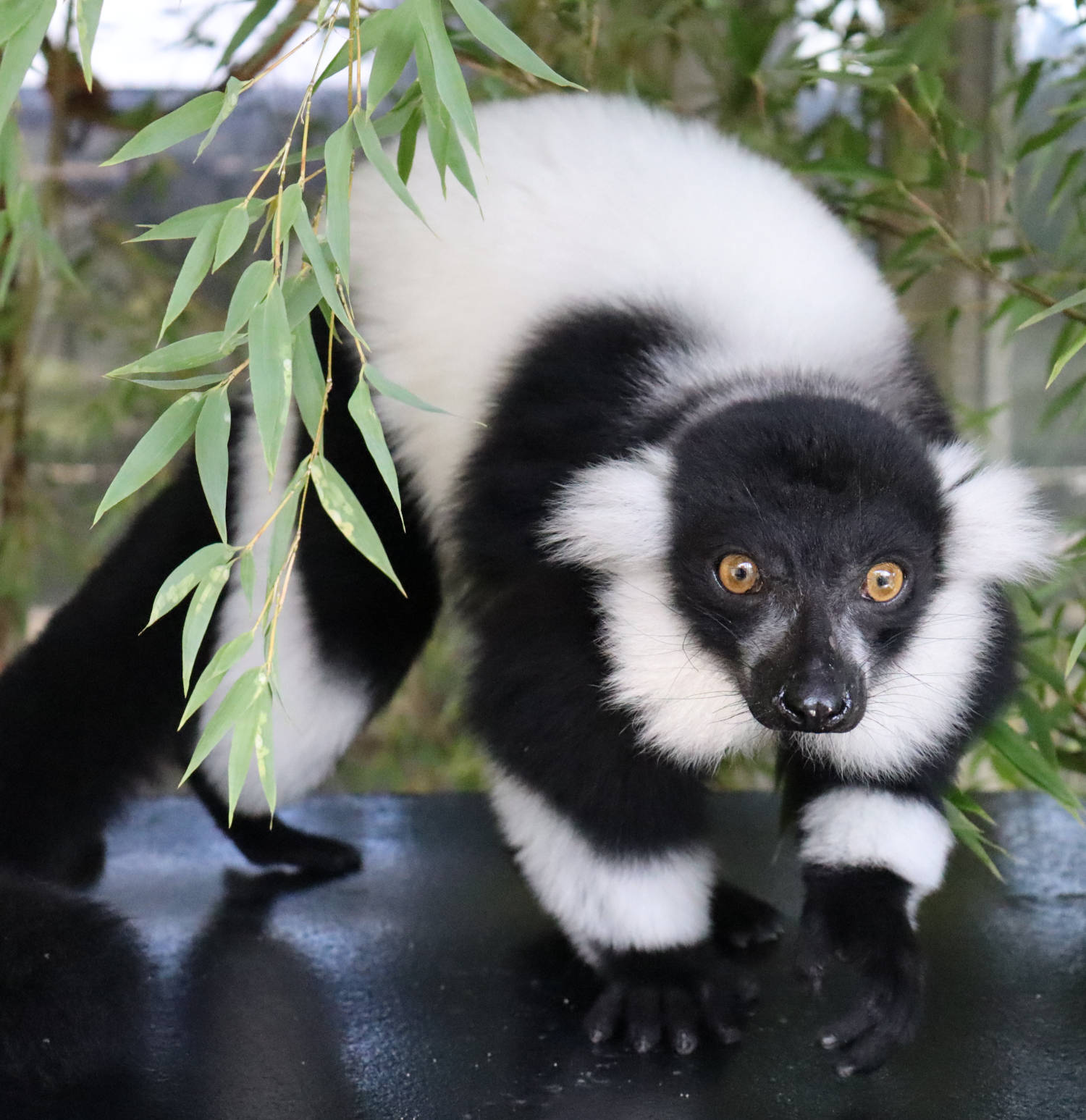
Important Facts
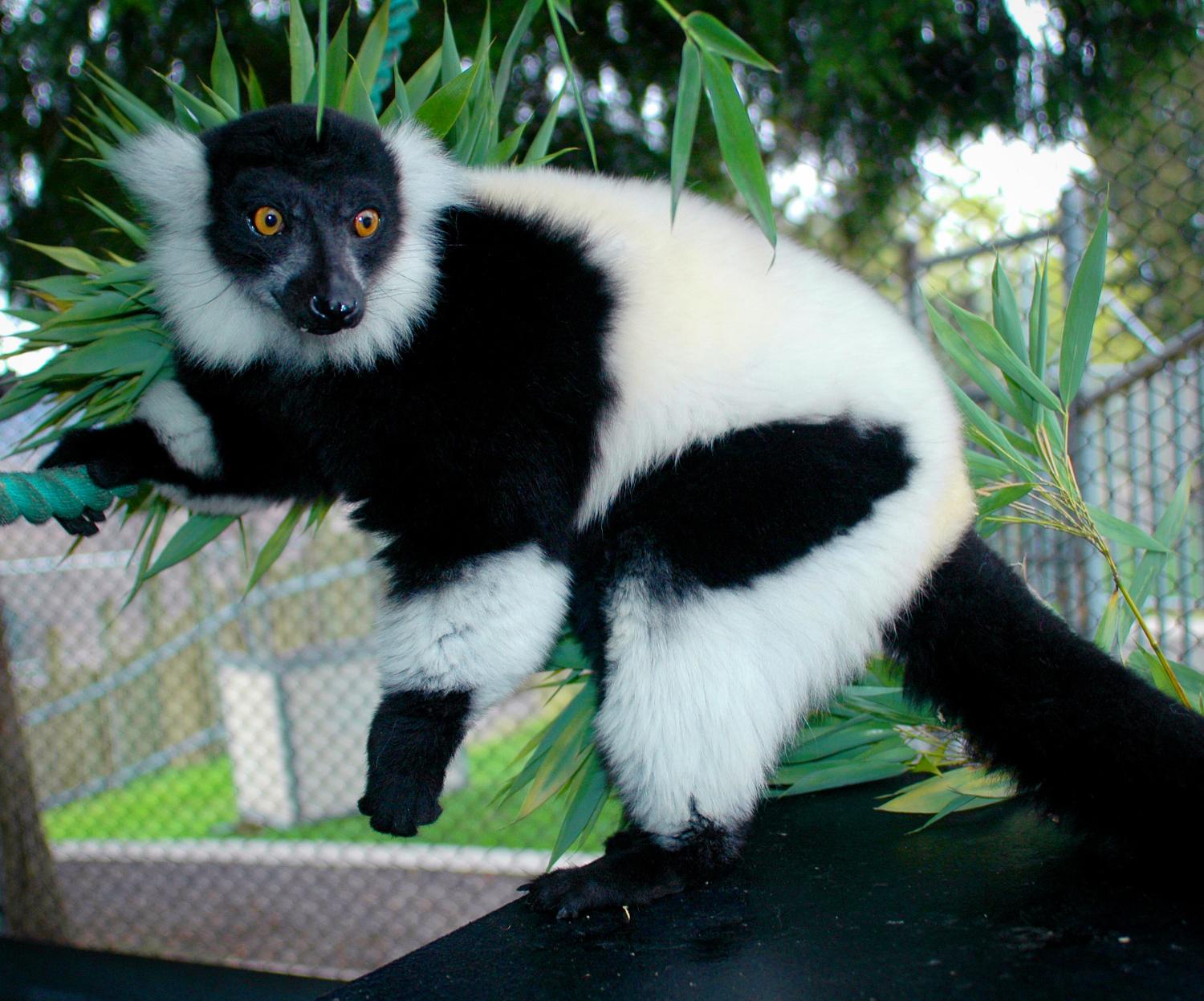
Ruffed lemurs produce a variety of loud vocalizations. It only takes one individual to begin a chorus that spreads to all ruffed lemurs within hearing range. Studies have found their calls to possibly serve to communicate either inter-group spacing, alarm, or intra-group coordination.
Black and white ruffs have three color variants.
They are separated from the red-ruffed lemur population by the Antainambalana River.
Sources:
IUCN: REDLIST
Duke LEMUR CENTER
LEMURS of Madagascar: Second Edition



